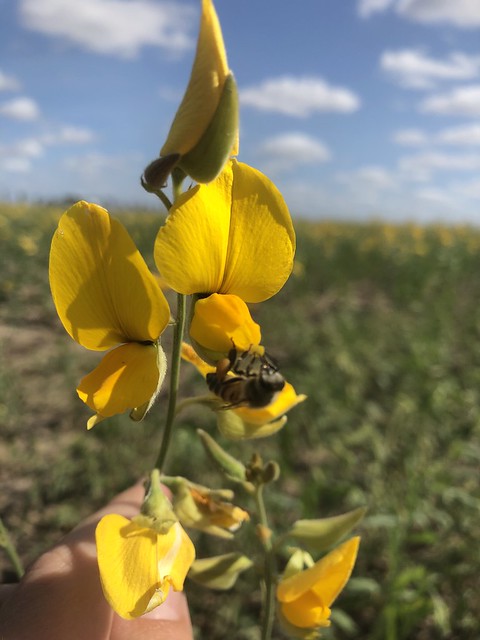
Using cover crops in northern latitudes is a challenge due to shorter growing seasons. However, the challenges can be just as significant in the far south of the United States.
The Lower Rio Grande Valley (LRGV) is hot, humid, and rarely freezes. “There is intense weed and insect pressure,” says National Center for Appropriate Technology (NCAT) Southwest Regional Director Dr. Mike Morris. At the same time, the potential benefits from cover cropping can be substantial in terms of improved soil health, weed suppression, increased soil moisture and biological activity, and reduced wind and water erosion.
In 2017, USDA’s Natural Resources Conservation Service (NRCS) awarded a $785,000 Conservation Innovation Grant (CIG) to NCAT to test different cover crops in the field to determine the best species for farmers in the LRGV. In collaboration with a University of Texas Rio Grande Valley (UTRGV) team led by Dr. Alexis Racelis, the “Subtropical Soil Health Initiative” is working with local farmers to field-test a wide array of cover crops for factors including biomass, effects on insect pests and beneficial insects, soil quality, and subsequent cash crop yield. Mike also sees cover crops as a way to encourage organic farming.
So far, the frontrunner appears to be Sunn Hemp, a robust plant from India that grows to 9- feet tall and can produce over 5,000 pounds of biomass per acre even during a sweltering South Texas summer. Sunn Hemp can also be terminated with a roller crimper – critical for a region where frost can’t be relied on to kill cover crops. This video, produced by NCAT, shows what the team has learned so far.
Beyond soil health, NCAT and UTRGV see their project benefitting public health. “The Lower Rio Grande Valley is an area that we see as having amazing natural resources and amazing potential in terms of agriculture and local food,” says Dr. Morris. “It’s also a region with severe poverty and diet-related health issues.”
The 2012 Census of Agriculture counted 3,826 Hispanic-operated farms in the region’s four counties, and UTRGV – one of the largest Hispanic-serving institutions in the United States – is building programs in food studies and the health sciences. NRCS’s Rafael Guerrero, Director of the Central National Technology Support Center, who provides technical support to the project, added, “We are trying to make our materials very accessible to those in the Rio Grande Valley.”
The project’s leaders give the lion’s share of credit to the local community for their support and input. “Farmers are very involved in this project,” says Dr. Morris. “They have made a lot of the decisions about the cover crops we’ve tried and made us very aware of the challenges they face.”
Through the CIG program, NRCS is funding innovative tools and technologies development that is helping farmers improve their operations and address critical natural resource concerns. For more information on the CIG program, visit the CIG website.






修改评论